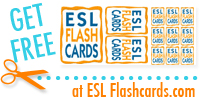First of all, I think working with this sort of model is useful to enable teachers to work out their own preferences and therefore analyse their own teaching style. I wrote about this
here in the context of the NLP VAK/Metaprograms model of cognitive styles, but whatever model you use, the point remains the same : your own cognitive preferences are going to affect the way you present activities in the classroom, the type of activities and approaches you emphasise and the types you avoid, considering them "not useful".
If a student has the same cognitive style as you, then it will work well. If not, then it won't. So, in answer to your question, I think the first thing the teacher has to do is look at his/her own teaching style in the light of the analysis and identify the areas which s/he is ignoring. At that point, even if you don't do a formal analysis of your students, you know what normally missing activities and approaches you need to build into the lesson in order to provide for all styles, and not just for those students who happen to reflect your own. The
hlt magazine article I cited before is excellent, incidentally, on relating the M-B analysis to teaching style.
Then there's the question of whether or not to present the analysis explicitly to the students. One of the reasons why I prefer to work with the NLP model at this level, rather than the Myers-Briggs, is that I find it simpler to present to students. With M-B I find I get too many "Well, I'm a bit of this and a bit of that" responses, and personally I don't know enough about the model to resolve those doubts. The VAK model allows for "predominantly this but a bit of that" and is simple enough for students to grasp easily.
However, once students have analysed their own styles - whichever model you use - I would then lead on to a discussion of the type of approach and activities we use in the c/r and use the analysis to point out that :
- the activities that we do that reflect their preferences will be the ones they are most comfortable with and instinctively feel to be useful.
- the ones they don't like may well be those which other people find most useful.
Given that you need to include activities that are useful for everyone, you can then discuss how
a) it will sometimes be possible for you to present information or conduct activities in different ways so that they can choose the way that best suits their own personal preference
b) it might be useful for them sometimes to try other ways and try and exploit methods of learning which
don't come naturally to them, in order to extend their repertoire of learning styles rather than to be constrained by it.
So - to answer your question about who should change : definitely the teacher, possibly the students - if they want to give it a try. But personally, I try to gear my lessons as much as possible towards accommodating the learning styles of the students.
In terms of M-B, how might you do this? As I said, I'm not an expert on the model, and the
hlt magazine article answers the question much better than I can here. But take any c/r activity and ask yourself how you could adapt it to the different M-B styles. A roleplay for example :
- Someone who was ENFP might be happy to jump into it immediately - to have a go and see what happens. If they managed to communicate successfully they'd be happy with their performance.
-On the other hand and ISTJ person might require the time to plan what they want to say and how to say it. And they'd want more detailed feedback on the accuracy of what they had said.
If reading this you find yourself siding with one group or the other - and I know which one is my preference - it's again an indication that in the classroom your personal style may be controlling your teaching style to the extent of not catering for the needs of the other group. Try offering the students the option :
Stage One - group A "just do it" while group B plan it.
Stage Two - Each group then "performs" their roleplay for the others.
Stage 3 - A content follow-up in which you ask the students to evaluate their own performance overall - this is directed at Group A.
Stage 4 - Language feedback which evaluates the accuracy/appropriacy of some of the things they said - this focuses mainly on things overheard from Group B.
As I said, M-B is not my favourite model, and I may have got the analysis wrong - check that you agree with me before you quote me. Personally I'm happier working with NLP, and also the
Honey and Mumford Learning Styles Inventory, which I find easier to get my brain around. here, I've tried to adapt things I do based on those models to M-B.
But I hope it helps a bit









 . I've got a pile of editing to do, so excuse me if I don't reply for now
. I've got a pile of editing to do, so excuse me if I don't reply for now Linear Mode
Linear Mode




